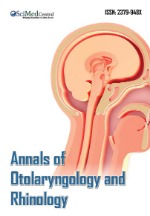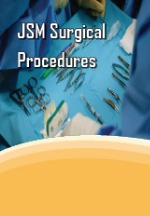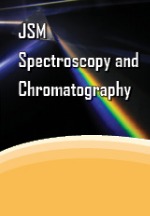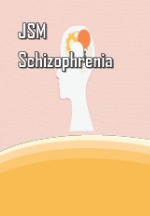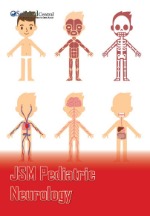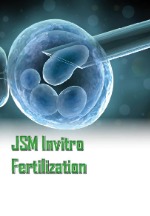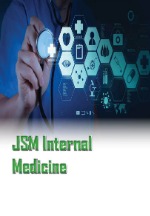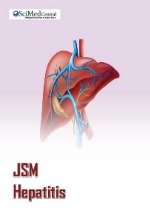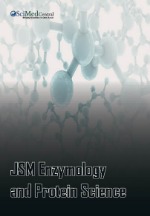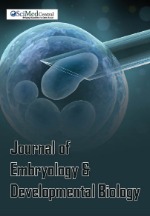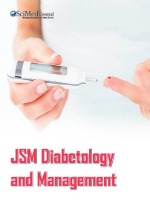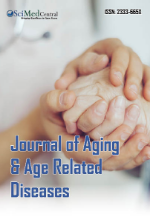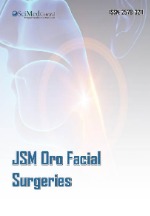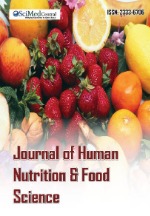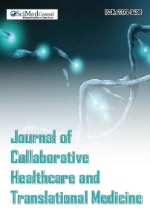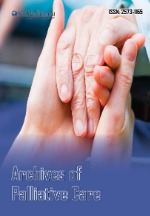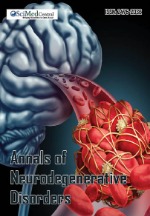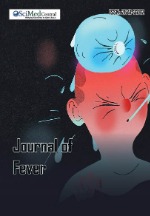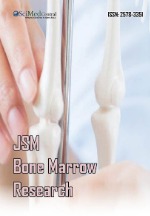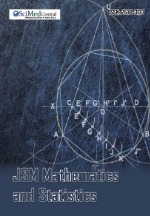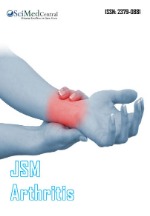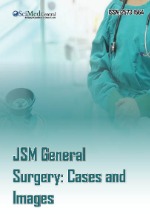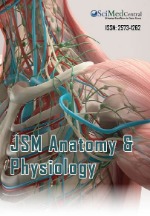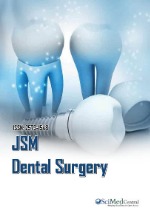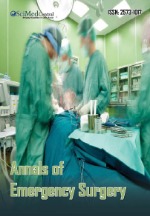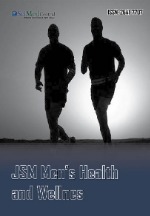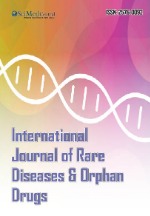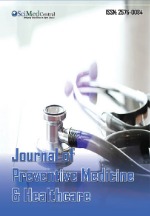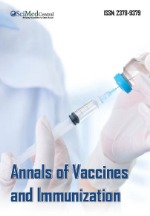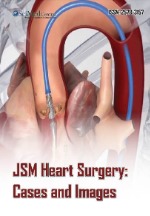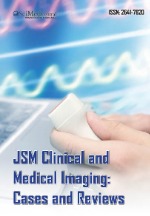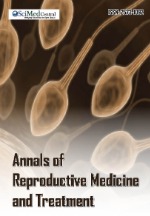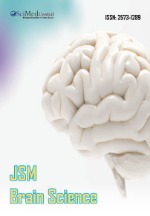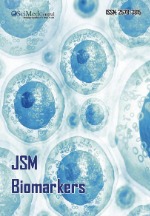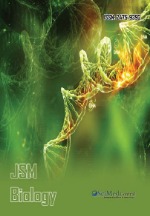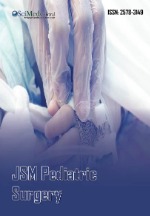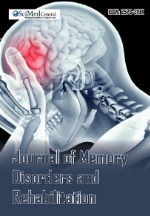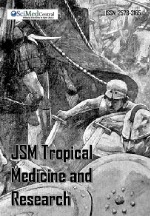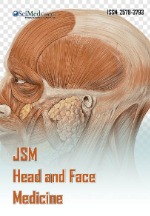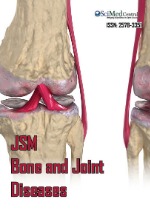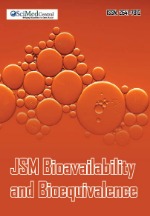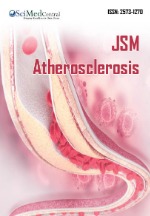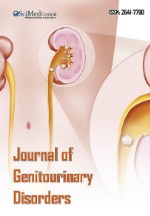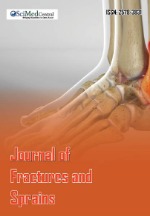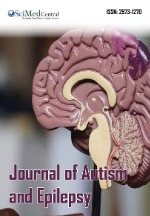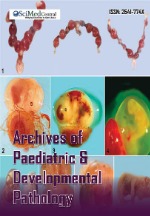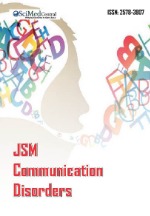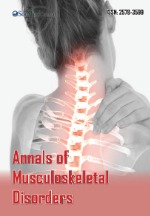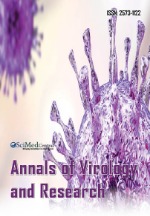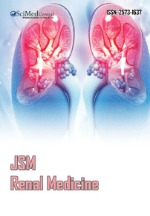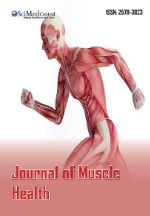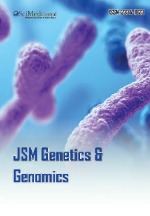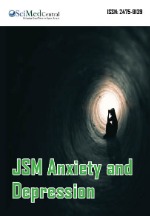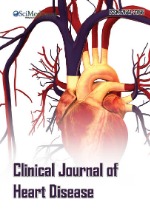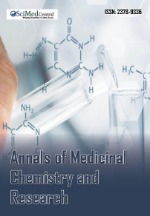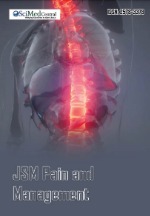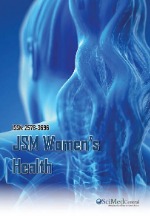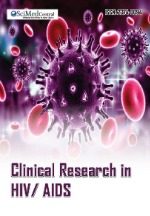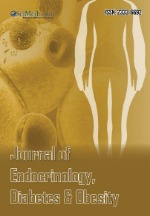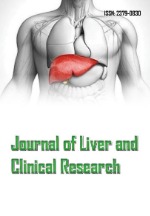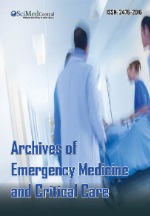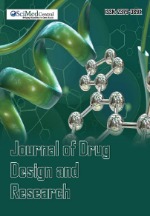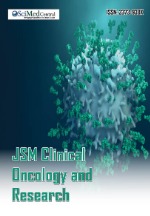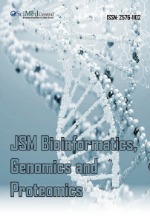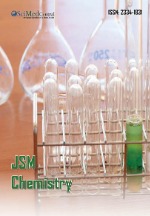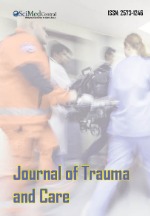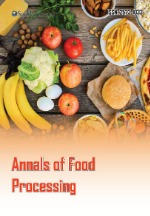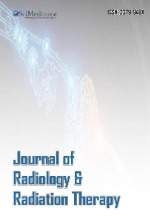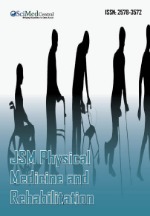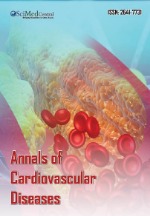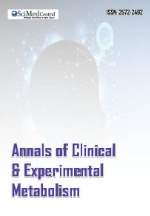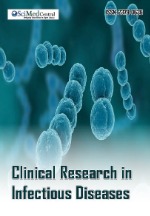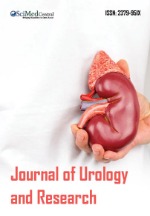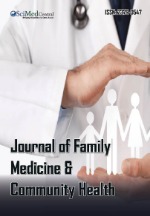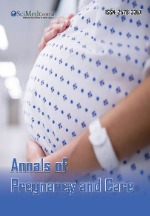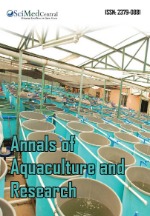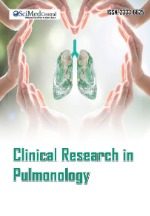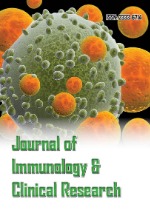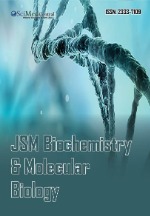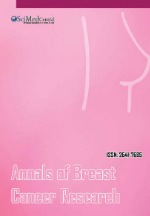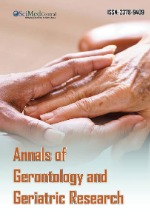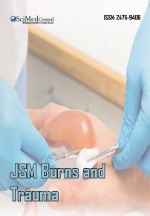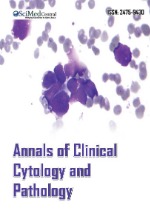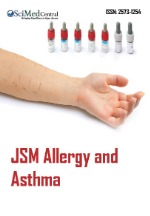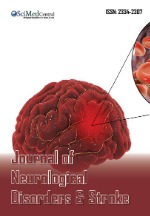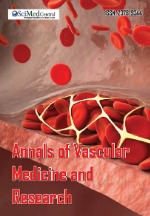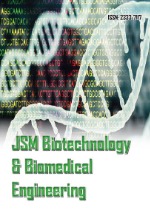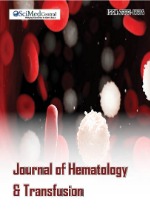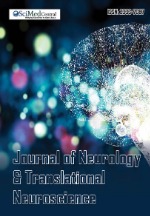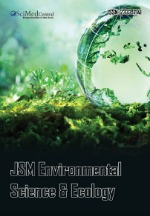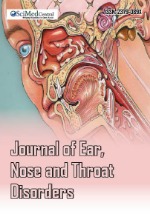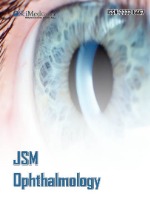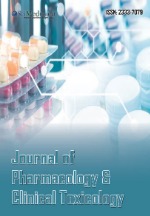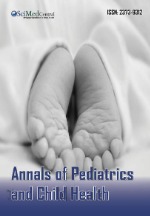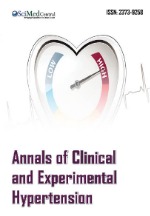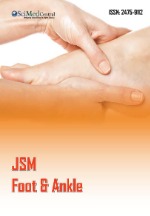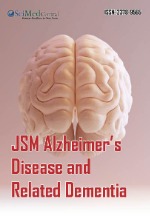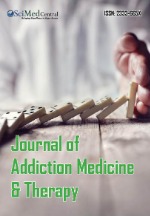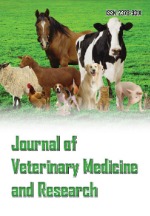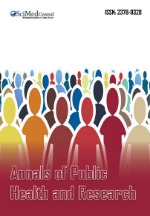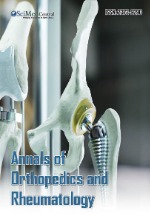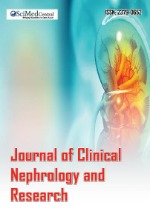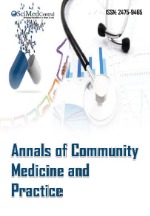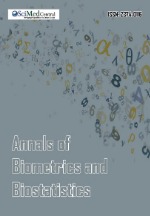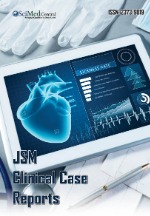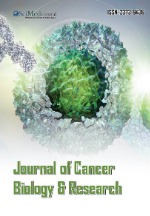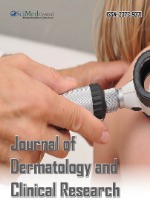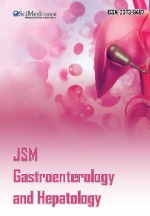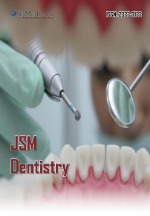Assessment of ARDS Severity: PaO2 /FiO2 versus PaO2 /Lactate
- 1. Intensive Care Unit, Agen-Nerac CH, Republic of the Congo
- 2. Department of Epidemiology and Biostatistics, School of Public Health, University of Kinshasa, Republic of the Congo
- 3. Department of Anaesthesia and Intensive Care Unit, Cliniques Universitaires de Kinshasa, Republic of the Congo
Abstract
Background: Among other limitations of the ratio of partial pressure of oxygen in arterial blood (PaO2) to the fraction of inspiratory oxygen concentration (FiO2) is the fact that it is influenced by Positive End-Expiratory Pressure (PEEP). Among those with ratio of the same value, the risk of lung damage is much higher in the patients with a higher PEEP. This leaves the way open for adaptations of this score. The aim of this study is to measure the correlation between a new proposed index, the PaO2/lactate index and the current golden standard, the PaO2/FiO2 index.
Methods: Blood gas samples from 100 patients with Acute Respiratory Distress Syndrome (ARDS) (PaO2/FiO2< 300), who were intubated and ventilated, in the surgical intensive care unit of Emile Muller Hospital in Mulhouse, France, from January 2021 to July 2022 were analysed. Data on gasometry, mainly FiO2, PaO2 and lactate, were collected. The Spearman’s rank-order (Rho) test was used to determine the correlation between the PaO2/FiO2 and PaO2/lactate index and the area under the area under the ROC curve was used to compare the prediction of mortality.
Results: The median age of the patients was 65.5 [21-90] years, and 70% of them were male (M/F 2.33). Spearman’s Rho was 0.764 (p = 0.01). The area under the ROC curve was 0.687 (95% CI: 0.612 – 0.761) and p < 0.001 for the PaO2/FiO2 index and 0.716 (95% CI: 0.646 – 0.787) and p < 0.001 for the PaO2/lactate index.
Conclusion: The PaO2/lactate index not only correlates well with the PaO2/FiO2 index, it a much more accurate predictor of mortality. For this reason, it could be used instead of the PaO2/FiO2 index to assess the severity of ARDS.
KEYWORDS
- PaO2
- FiO2
- Lactate
- Concordance
- France
CITATION
Bienvenu NEL, Bibiche KK, Prince KD, Médard BI, Jerry M, et al. (2024) Assessment of ARDS Severity: PaO2/FiO2 versus PaO2/Lactate. Int J Clin Anesthesiol 12(2): 1133.
INTRODUCTION
The current definition of Acute Respiratory Distress Syndrome (ARDS) uses the ratio of arterial oxygen pressure to inspired oxygen fraction (PaO2/FiO2 or P/F) to estimate stage of severity. However, for whose with the same P/F ratio, the risk of having more serious lung damage is much higher in the patients whose Positive End-Expiratory Pressure (PEEP) is higher. This has led authors like Palanidurai S et al. to ask the following question: “Is it time to revise the PaO2/FiO2 index to define the severity of oxygenation in ARDS”? [1]. Similarly, El-Khatib MF et al. and many other authors hold that the P/F ratio should be reviewed in order to improve the classification and prognosis of ARDS [2-4].
As a solution, Palanidurai propose the insertion of PEEP into the calculation of PaO2/FiO2. This is supported by authors like Grotberg JC, et al and Yujen C, et al. [3,4]. Using ROC curves and incorporating PEEP into the formula (P/FP), Palannidurai S, et al. showed that the predictive value for mortality of patients with ARDS was significantly better with the ratio that include PEEP (P/FP) than with the P/F ratio for different PEEP thresholds > 5 cm H2O [5].
El-Khatib’s analysis of the study by Palanidurai S, et al. [5] revealed that these authors had only incorporated the PEEP into the P/F ratio; they neglected other important parameters of mechanical ventilatory assistance such as the I/E ratio and the maximum inspiratory and alveolar pressure and, consequently, the driver pressure. El-Khatib MF, et al. therefore, propose replacing PEEP with Mean Airway Pressure (MAP). The advantage of including MAP rather than PEEP in the P/F ratio is that it better reflects mean alveolar pressure and, can therefore be considered a more appropriate modifying factor in the P/F ratio [2].
In addition to the proposal to insert PEEP or MAP in the PaO2/ FiO2 ratio, other authors such as Zhang H, et al. [6] have proposed the use of lactate in the stratification of ARDS with sepsis. Indeed, lactate is a biomarker of tissue hypoxia. Therefore, it could be used to categorise and predict ARDS-related mortality. The aim of the present study, which incorporate lactate into the calculation of ARDS severity is to measure the correlation between the PaO2/ lactate index and the PaO2/FiO2 index and also to compare the prediction of the mortality of ARDS patients by the two indexes. The preliminary results of this study were presented at the SFAR 2023 congress [7].
METHODS
This is a retrospective observational study of patient’s files that took place in the surgical intensive care unit of Emile Muller Hospital, Mulhouse, France from January 2021 to July 2022 (19 months). The records of ARDS patients (PaO2/FiO2 < 300) admitted to the surgical intensive care unit of said hospital, where gasometry had been performed and results for FiO2, PaO2 and lactate could be found, were analysed in order to compare the PaO2/FiO2 index with the PaO2/lactate index. The degree of precision for the PaO2/lactate ratio was of centesimal order. In addition to the three variables of interest that were examined: Age, sex, ARDS as a diagnosis, mortality and morbidity.
The results were presented in terms of proportions and percentages for the qualitative data and as means with standard deviation for the quantitative data. The correlation between the two indices was sought using Spearman’s rank-order correlation (Rho) and the prediction of mortality of the two indices was investigated using the area under the Receiver Operating Characteristic (ROC) curve. Results with a p < 0.05 were considered as statistically significant.
RESULTS
Blood gas samples from 100 patients were analysed. All patients had been intubated and ventilated. The median age was 65.5 (21-90) years and the male to female ratio was 2.33. Table 1 indicates the distribution of patients by age and sex.
Table 1: Distribution of patients by age and sex.
|
Variables |
Values |
|
|
n (%) |
|
Sex, |
|
|
Male |
70 (70) |
|
Female |
30 (30) |
|
Ratio |
2,33 |
|
Age (years) |
|
|
Me (EIQ) |
65,5 [21- 90] |
|
<65 |
47 (47) |
|
≥65 |
53 (53) |
Seventy percent of patients were male and just over half of them were over 65 years.
The correlation between the PaO2/FiO2 index on the y-axis and the PaO2/lactate index on the x-axis is shown in figure 1.
Figure 1: Correlation between PaO2 /FiO2 and PaO2 /lactate. With a Spearman’s Rho of 0.764, the PaO2 /lactate index has a very good correlation with the PaO2 /FiO2 index (p = 0.01).
The prediction of mortality attained with the two indexes is shown in figure 2.
Figure 2: Prediction of mortality based on the ROC curve indexes. The PaO2 /FiO2 index predicted mortality with an area under the ROC curve (AUC) of 0.687 (95% CI: 0.612 – 0.761; p < 0.001) and the PaO2 /lactate index predicted mortality with the area under the ROC curve being 0.716 (95% CI: 0.646 – 0.787; p < 0.001).
DISCUSSION
To understand the degree of tissue hypoxia, we can look at the need for oxygen and the percentage of FiO2 that is necessary to normalise PaO2 . An other possibility would be to look for the metabolic deficit, expressed in terms of the lactate generated by this hypoxia, lactate is a biomarker of tissue hypoxia. In the first case, the PaO2 /FiO2 index is used and in the second, PaO2 /lactate index is used.
The aim of the present study was to measure the correlation between the PaO2 /lactate index and the PaO2 /FiO2 index and also to compare their prediction of the mortality of ARDS patients. With a Spearman’s Rho of 0.764, this study showed that the PaO2 /lactate index has a very good correlation with the PaO2 / FiO2 index. As a result, the new index could be used instead of the PaO2 /FiO2 index, especially when the PEEP is high.
We did not find any literature on the PaO2 /lactate index in the literature. The present study seems to be the first to design and propose the PaO2 /lactate index as an alternative to the PaO2 /FiO2 index to solve the problem of the influence of PEEP on the value of the PaO2 /FiO2 ratio. By analyzing the different elements of these two indices, we note that existence of a correlation between PaO2 and mortality linked to ARDS is well known [8]; the same is true for existence of a correlation between the concentration of lactate in the blood and mortality linked to ARDS [9-13]. PaO2 and lactate each correlate independently with ARDS-related mortality and the PaO2 /lactate ratio has been used as a tool to predict mortality in patients with ARDS.
In this study, the PaO2 /lactate index (AUC 0.716 (95% CI: 0.646 – 0.787; p < 0.001) was a good prediction of mortality linked to ARDS with an area under the ROC curve greater than that of the PaO2 /FiO2 index, AUC 0.687 (CI 95%: 0.612 – 0.761; p < 0.001). This means that, if we were to take into account only this result, the area under the ROC curve of the two indices, the PaO2 / lactate index could well replace the PaO2 /FiO2 index. Further research needs to be carried out in order to confirm this.
Furthermore, if PaO2 is directly linked to the prediction of mortality and also influences the choice of treatment; conversely, FiO2 itself does not seem to be a good parameter for the prognosis of ARDS-related mortality [8]. Thus, choosing the PaO2 /FiO2 index for the definition of ARDS would unnecessarily expose many hypoxemic patients to potentially fatal treatment (intubation) [8]. Speaking of FiO2 , Tobin MJ, et al. adds that “taking into account FIO2 has never been part of the definition of hypoxemia; that judging the hypoxemia severity in terms of oxygen requirements could be harmful to patients” [8].
Although the PaO2 /FiO2 index is considered the goal standard in the definition and classification of ARDS, it is likely to be influenced by factors such as inspiratory time, inspiratory flow rate, respiratory rate, maximum inspiratory pressure and PEEP. The impact of PEEP on PaO2 is much higher than the influence of any of these other variables [1]. For this reason, some authors felt the need to insert the PEEP into the PaO2 /FiO2 index and this made it possible to improve the mortality prediction linked to ARDS.
In a study of 217 patients admitted to the medical-surgical intensive care unit of the Hermanos Ameijeiras Hospital in Havana, Cuba, Martos-Benítez FD, et al. showed that the assessment of ARDS severity based on the P/FP index seems better than the PaO2 /FiO2 ratio in predicting mortality [14]. Other authors have also obtained results showing that the prediction of ARDS-related mortality was greater with the P/FP index than with the P/F index [3,4]. The present study used a new index, the PaO2 /lactate index, wich is more independent of PEEP, and this also showed a better prediction of mortality than the PaO2 /FiO2 index.
The accuracy of the American-European consensus definition of ARDS was also found to be moderate compared to autopsy findings of diffuse alveolar damage in a study of 382 patients [15]. The problem is once again, the reference to FiO2 which, these authors emphasise, explains this divergence to a certain extent.
This is due to the hemoglobin dissociation curve, the arteriovenous difference in O2 , the PaCO2 level and the hemoglobin level which mean that the relationship between the PaO2 /FiO2 ratio and FiO2 is neither constant nor linear but rather curvilinear. This non-linear relationship between PaO2 /FiO2 and FiO2 explains the limits of describing the intensity of hypoxemia using PaO2 /FiO2 [16].
This study was limited to comparing the PaO2 /lactate index with the PaO2 /FiO2 index, the latter being the gold standard for measuring the severity of ARDS. The fact that the PaO2 /lactate index does not depend on either FiO2 or PEEP is advantage in favor of this new index which could allow the assessment of ARDS upon patient admission to an intensive care unit before being intubated and ventilated. The main component is that a gas analysis needs to be carried out. In the context of ARDS, this should be systematic and carried out early, given the risk of acidosis with its corollary, hyperkalemia and tissue damage.
CONCLUSION
The PaO2 /lactate index shows a good correlation with the PaO2 /FiO2 index. In addition, the area under the ROC curve is greater for the PaO2 /lactate index than for PaO2 /FiO2 index. This means that the PaO2 /lactates index could replace the PaO2 /FiO2 index or at least serve as an alternative, especially when the PEEP is high.
STRENGTHS AND LIMITATIONS OF THE STUDY
The small sample size, retrospective nature of the study and the fact that the data are drawn from medical records (selection bias and attrition bias) limit the scope of the conclusions of this study to simple hypotheses. The strength of this study is in proposing a tool which does not need to take PEEP into account to determine the degree of severity of ARDS.
REFERENCES
- Palanidurai S, Phua J, Chan YH, Mukhopadhyay A. Is it time to revisit the PaO2/FiO2 ratio to define the severity of oxygenation in ARDS? Ann intensive care 2021; 11: 138.
- El-Khatib MF, BouAkl IJ, Hallal AH. Incorporating ventilatory support parameters into the PaO2/FiO2 ratio in ARDS patients. Ann Intensive Care. 2021; 11: 137.
- Grotberg JC, Reynolds D, Kraft BD. Management of severe acute respiratory distress syndrome: A primer. Crit Care. 2023; 27: 289.
- Yujen C, Shuhua C. In Taiwan comparing ARDS Severity: Berlin definition vs lung injurybscore. European Respiratory Journal. 2023; 62: PA1217.
- Palanidurai S, Phua J, Chan YH, Mukhopadhyay A. P/FP ratio: Incorporation of PEEP into the PaO2/FiO2 ratio for prognostication and classification of acute respiratory distress syndrome. Ann Intensive Care. 2021; 11: 124.
- Zhang H, Li Z, Zheng W, Zhang L, Yang T, Xie K, et al. Risk stratification of patients with acute respiratory distress syndrome complicated with sepsis using lactate trajectories. BMC Pulm Med. 2022; 22: 339.
- Bula-Bula IM, Kitshiabi K, Muluma J, Mafuta P, Ndjoko S, Mutombo S, et al. Evaluation de la sévérité du SDRA: PaO2 /FiO2 versus PaO2 / lactates. Le Congrès SFAR. Paris. 2023.
- Tobin MJ, Jubran A, Laghi F. PaO2 /FIO2 ratio: The mismeasure of oxygenation in COVID-19. Eur Respir J. 2021; 57: 2100274.
- Maraziti G, Marchini L, Barbieri G, Falcone M, Corradi F, Graziani M, et al. Arterial lactate as a risk factor for death in respiratory failure related to coronavirus disease 2019: An observational study. Ther Adv Respir Dis. 2023; 17: 17534666231186730.
- Zhang G, Zhang J, Wang B, Zhu X, Wang Q, Qiu S. Analysis of clinical characteristics and laboratory findings of 95 cases of 2019 novel coronavirus pneumonia in Wuhan, China: A retrospective analysis. Respir Res. 2020; 21: 74.
- Vincent JL, E Silva AQ, Couto L Jr, Taccone FS. The value of blood lactate kinetics in critically ill patients: A systematic review. Crit Care. 2016; 20: 257.
- Vincent JL, Bakker J. Blood lactate levels in sepsis: In 8 questions. Curr Opin Crit Care. 2021; 27: 298-302.
- Kliegel A, Losert H, Sterz F, Holzer M, Zeiner A, Havel C, et al. Serial lactate determinations for prediction of outcome after cardiac arrest. Medicine (Baltimore). 2004; 83: 274-279.
- Martos-Benítez FD, Estévez-Muguercia R, Orama-Requejo V, Del Toro- Simoni T. Prognostic value of the novel P/FPE index to classify ARDS severity: A cohort study. Med Intensiva (Engl Ed). 2023; 47: 373-382.
- Esteban A, Fernández-Segoviano P, Frutos-Vivar F, Aramburu JA, Nájera L, Ferguson ND, et al. Comparison of clinical criteria for the acute respiratory distress syndrome with autopsy findings. Ann Intern Med. 2004; 141: 440-445.
- Aboab J, Louis B, Jonson B, Brochard L. Relation between PaO2/FIO2 ratio and FIO2: A mathematical description. Intensive Care Med. 2006; 32: 1494-1497.




